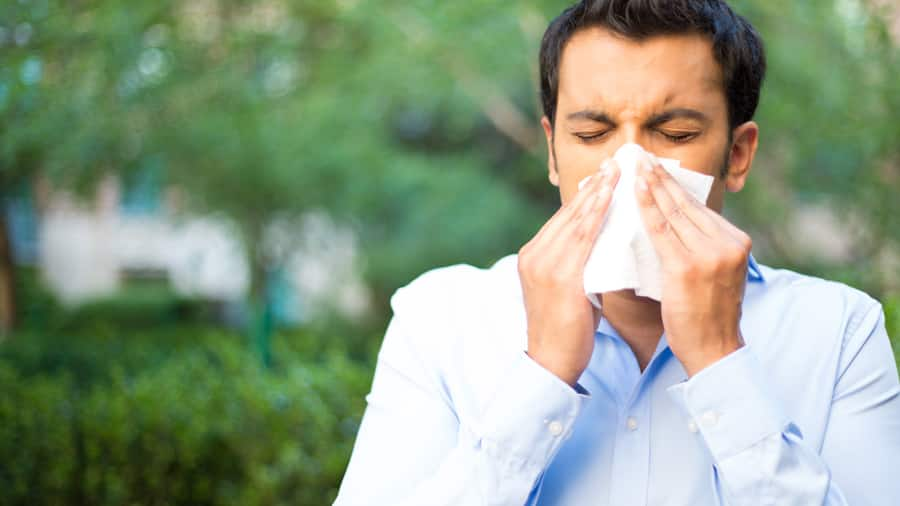Bad Breath Cure: Sinus Infection Treatment Guide

The misery of bad breath, or halitosis, can be a debilitating condition that affects not just our personal relationships but also our self-esteem and overall well-being. While there are many potential causes of bad breath, one of the most common and often overlooked culprits is a sinus infection. In this comprehensive guide, we’ll delve into the world of sinus infections, explore their connection to bad breath, and provide an expert-level treatment plan to help you say goodbye to halitosis for good.
Understanding Sinus Infections
Before we dive into the treatment options, it’s essential to understand what sinus infections are and how they can lead to bad breath. Sinus infections, also known as sinusitis, occur when the sinuses become inflamed or infected, often due to a viral or bacterial infection. The sinuses are air-filled cavities located within the skull, responsible for producing mucus that helps to filter and humidify the air we breathe. When the sinuses become infected, the mucus production increases, leading to congestion, pressure, and pain in the face, forehead, and cheeks.
The Connection Between Sinus Infections and Bad Breath
So, how do sinus infections cause bad breath? The answer lies in the anatomy of the sinuses and the way they drain. When the sinuses are infected, the mucus they produce can become thick and cloudy, providing a fertile ground for bacteria to grow. These bacteria can then travel down the back of the throat, where they can cause bad breath. Additionally, the Eustachian tube, which connects the middle ear to the back of the throat, can also become blocked due to sinus pressure, leading to a buildup of bacteria and mucus that can contribute to halitosis.
Treatment Options for Sinus Infections and Bad Breath
Fortunately, there are many effective treatment options available to help alleviate sinus infections and banish bad breath. Here are some of the most effective approaches:
- Antibiotics: If your sinus infection is caused by a bacterial infection, your doctor may prescribe antibiotics to help clear up the infection. It’s essential to complete the full course of antibiotics, even if your symptoms start to improve, to ensure that the infection is fully cleared.
- Nasal Decongestants: Over-the-counter nasal decongestants can help to reduce congestion and open up the sinuses, making it easier to breathe and reducing the production of mucus. However, it’s essential to use these medications only as directed, as prolonged use can lead to rebound congestion.
- Nasal Saline Irrigation: Rinsing your nasal passages with a saline solution can help to loosen and flush out mucus, reduce congestion, and kill bacteria. You can use a neti pot or a squeeze bottle with a nasal spray tip to administer the saline solution.
- Steam Inhalation: Inhaling steam from a bowl of hot water or a steam inhaler can help to loosen mucus, reduce congestion, and kill bacteria. You can add eucalyptus oil or menthol to the water for added benefits.
- Humidifiers: Dry air can exacerbate sinus infections and bad breath, so using a humidifier to add moisture to the air can help to alleviate symptoms.
- Good Oral Hygiene: Practicing good oral hygiene, including brushing and flossing your teeth regularly, can help to reduce bacteria in the mouth and prevent bad breath.
- Dietary Changes: Eating a balanced diet rich in fruits, vegetables, and whole grains can help to boost your immune system and reduce inflammation. Avoiding dairy products, gluten, and sugary foods, which can exacerbate sinus infections, can also be beneficial.
Advanced Treatment Options
In some cases, sinus infections and bad breath may require more advanced treatment options. These may include:
- Sinus Surgery: In severe cases of sinus infections, surgery may be necessary to remove blockages, drain the sinuses, or repair any damage to the sinus passages.
- Balloon Sinuplasty: This minimally invasive procedure involves using a balloon to dilate the sinus passages and improve drainage.
- Immunotherapy: If your sinus infections are caused by allergies, immunotherapy may be an effective treatment option to help desensitize you to specific allergens.
Conclusion
Sinus infections and bad breath can be a frustrating and debilitating combination, but there is hope for relief. By understanding the connection between sinus infections and bad breath, and exploring the various treatment options available, you can take the first steps towards saying goodbye to halitosis and hello to fresh, clean breath. Remember to always consult with a healthcare professional before starting any new treatment plan, and don’t hesitate to reach out for help if your symptoms persist or worsen over time.
What are the most common symptoms of a sinus infection?
+The most common symptoms of a sinus infection include nasal congestion, facial pain and pressure, headache, cough, sore throat, and bad breath. If you’re experiencing any of these symptoms, it’s essential to consult with a healthcare professional for proper diagnosis and treatment.
How can I prevent sinus infections and bad breath?
+Preventing sinus infections and bad breath requires a combination of good hygiene practices, a healthy diet, and lifestyle changes. Some effective prevention strategies include practicing good oral hygiene, using a humidifier to add moisture to the air, avoiding allergens and irritants, and staying hydrated by drinking plenty of water.
Can sinus infections be caused by food allergies or intolerances?
+Yes, food allergies or intolerances can contribute to sinus infections and bad breath. Common culprits include dairy products, gluten, and sugary foods. If you suspect that food allergies or intolerances may be contributing to your sinus infections, consider keeping a food diary to track your symptoms and speaking with a healthcare professional about potential elimination diets or allergy testing.
